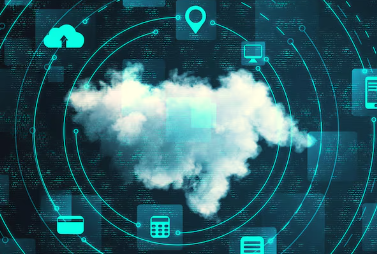In today’s fast-evolving digital landscape, STL Digital leads the way in providing advanced security solutions that safeguard businesses against emerging cyber threats. Through continuous innovation and expert management, STL Digital ensures robust protection and resilience across digital ecosystems that form the backbone of every enterprise’s defense strategy. As organizations grow more interconnected, cybercriminals are exploiting advanced technologies like AI and automation to orchestrate complex, large-scale attacks. Traditional defense mechanisms—though essential—are no longer enough. This is where threat hunting steps in, revolutionizing the modern cybersecurity approach by identifying and mitigating threats before they cause damage.
Understanding Threat Hunting in the Modern Context
Threat hunting is not a reactive process—it’s Proactive Cybersecurity at its finest. Unlike automated systems that rely solely on alerts or predefined rules, threat hunting involves human expertise combined with advanced analytics and AI-driven tools to actively search for hidden threats within a network.
By integrating SOC Services and Penetration Testing, organizations can continuously monitor, analyze, and neutralize potential vulnerabilities that might otherwise go unnoticed. Threat hunters employ behavioral analysis, machine learning models, and anomaly detection techniques to identify subtle signs of compromise, even before an alert is triggered.
The Changing Cyber Threat Landscape
Cyber threats have grown exponentially, both in complexity and scale. According to Gartner, global information security spending is projected to reach $212 billion in 2025, marking a 15.1% increase from 2024. This surge highlights how businesses are prioritizing security amid escalating risks from ransomware, phishing, insider threats, and AI-driven attacks.
Gartner further predicts that by 2027, 17% of total cyberattacks will involve generative AI, fundamentally changing how defenders and attackers operate. Organizations that fail to modernize their Cyber Security Services risk becoming prime targets for these sophisticated attacks.
The growing reliance on cloud technologies, remote work, and digital transformation has widened the attack surface. To stay ahead, enterprises must adopt Managed Security Service Providers (MSSPs) that offer continuous monitoring, adaptive security frameworks, and intelligence-led threat detection.
Why Traditional Security Isn’t Enough
Legacy security systems were designed for a world of static networks and predictable threats. Today’s threat actors, however, operate dynamically—often leveraging automation and AI to bypass perimeter defenses.
Most organizations still rely heavily on reactive measures like firewalls and antivirus software, which only respond after an incident occurs. These tools, while useful, provide limited visibility into advanced persistent threats (APTs) or insider activities.
This is where threat hunting, powered by Penetration Testing and SOC Services, adds tremendous value. It focuses on discovering “unknown unknowns”—threats that bypass automated detection systems.
By combining behavioral analytics, data correlation, and real-time monitoring, enterprises can shift from a “wait-and-respond” mindset to a “predict-and-prevent” approach.
The Role of Threat Hunters
A professional threat hunter blends analytical thinking, technical expertise, and cybersecurity intuition. Their primary role is to look for hidden malicious activities within systems using indicators of compromise (IoCs), such as unusual login patterns, lateral movement within networks, or unexpected data transfers.
Through Penetration Testing, hunters simulate real-world attacks to uncover weaknesses in networks, endpoints, and applications. These tests, paired with SOC Services, provide critical insights into how systems might respond to an actual cyberattack.
Modern threat hunters also rely on Machine Learning (ML) and Artificial Intelligence (AI) models to process vast amounts of log data, detecting deviations from normal user or system behavior. This proactive monitoring allows teams to stop potential breaches before they evolve into full-blown incidents.
Key Market Insights: The Growth of Cybersecurity Investments
According to Statista, the global cybersecurity market was valued at over $200 billion in 2024, with the enterprise security software segment expected to surpass $132 billion by 2028.
The report emphasizes that as more organizations shift to cloud environments, cloud security has become one of the most sought-after technical skills worldwide. This massive growth demonstrates that businesses are now prioritizing proactive cyber resilience over traditional reactive defense.
The Intersection of AI and Threat Hunting
Artificial Intelligence is redefining both sides of the cybersecurity equation. While attackers are using AI to craft deepfake phishing campaigns and automate exploitation, defenders are leveraging the same technology to analyze anomalies and predict attack patterns.
Modern SOC Services utilize AI to filter through millions of logs in real-time, flagging only the most relevant alerts to human analysts. AI-enhanced Penetration Testing tools simulate complex attacks at scale, helping enterprises identify gaps faster and more efficiently.
By combining AI-driven analytics with skilled human expertise, threat hunters can detect stealthy breaches—such as credential abuse, lateral movement, or zero-day exploits—before they impact operations.
The Business Case for Proactive Threat Hunting
Adopting a proactive cybersecurity stance isn’t just a technical decision—it’s a business imperative. The cost of a single data breach averages several million dollars, not including the loss of reputation, customer trust, or regulatory penalties.
Managed Security Service Providers (MSSPs) offer scalable, 24/7 protection that adapts to evolving threats. They provide enterprises with continuous threat intelligence, rapid incident response, and periodic Penetration Testing to assess system resilience.
When integrated with SOC Services, enterprises can centralize security monitoring, improve visibility across hybrid infrastructures, and enhance operational resilience.
Best Practices for Effective Threat Hunting
To establish an effective threat hunting framework, organizations should consider these best practices:
- Develop a Robust Data Foundation:
Consolidate logs from firewalls, endpoints, applications, and servers to enable unified analysis.
- Leverage Threat Intelligence Feeds:
Use global intelligence to stay ahead of emerging attack vectors and patterns.
- Automate Where Possible:
Deploy AI-powered analytics within SOC Services to reduce manual alert fatigue.
- Conduct Regular Penetration Testing:
Continuously evaluate your infrastructure to discover vulnerabilities before hackers do.
- Partner with Experienced Providers:
Collaborate with a reliable Managed Security Service Provider to gain round-the-clock protection and specialized threat detection expertise.
Building a Resilient Future with STL Digital
As the cybersecurity landscape grows increasingly sophisticated, enterprises must move beyond reactive defense. This is where STL Digital helps organizations stay ahead through next-generation Cyber Security Services. STL Digital’s holistic approach combines automation, intelligence, and human expertise to proactively hunt threats, minimize risks, and ensure business continuity. Our managed services are designed to protect digital assets, optimize infrastructure, and align with enterprise objectives. By partnering with STL Digital, organizations can transform their cybersecurity strategy from reactive firefighting to predictive defense—setting new benchmarks for digital resilience and operational security.



